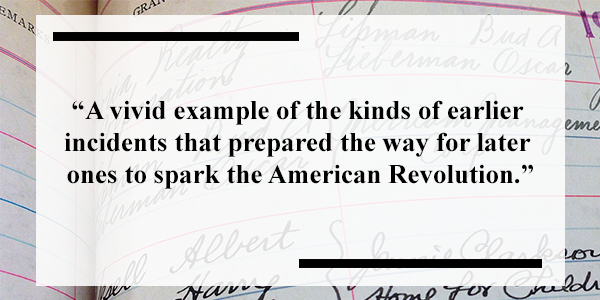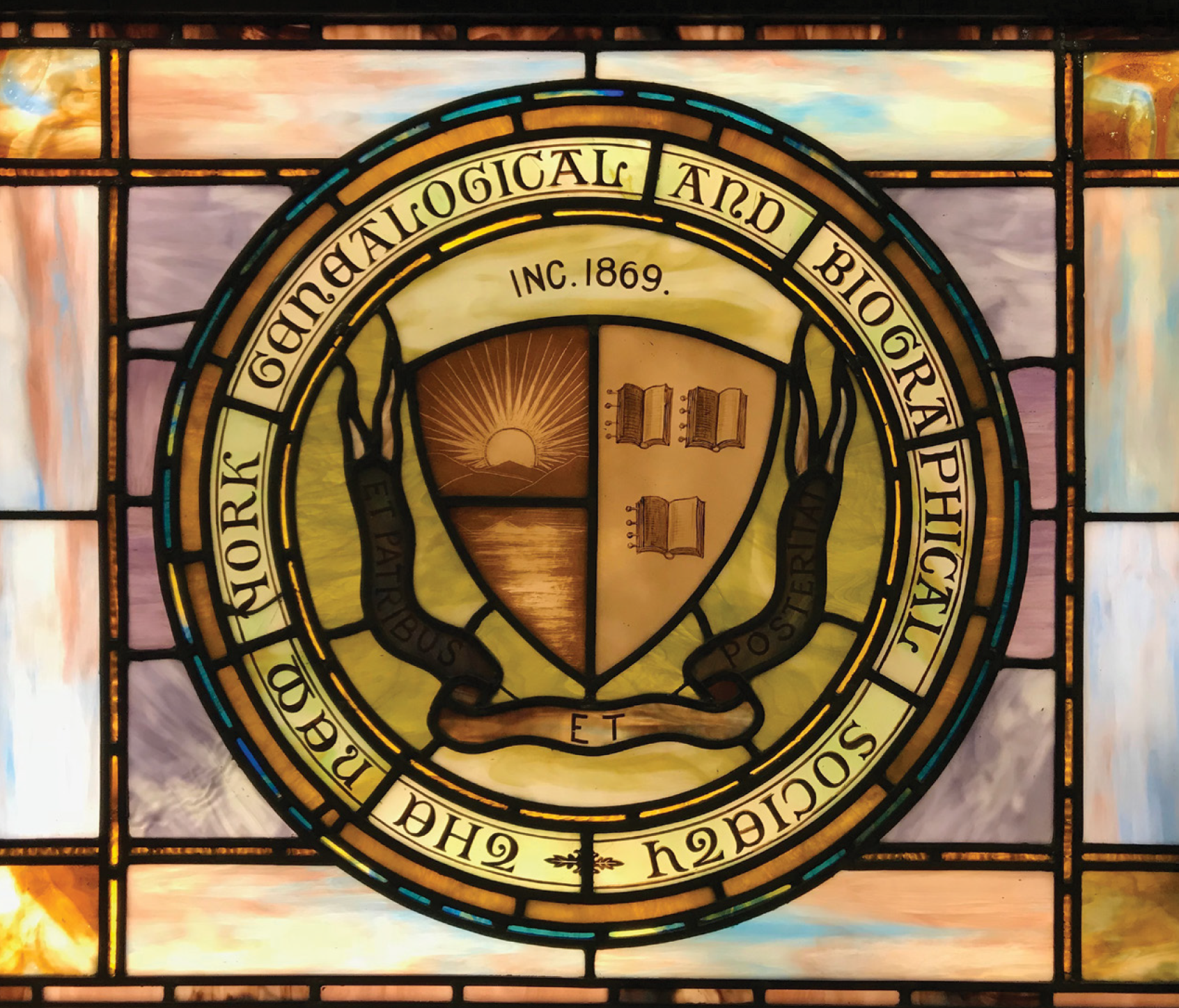On Friday, June 7, 1750, a coroner named John Burnet probably woke up thinking he was going to have a normal workday. As Francis Sypher detailed in the NYG&B’s “Minutes of Coroner’s Proceedings” collection, Burnet’s normal was far from typical.
In the introduction to this volume, Sypher notes that the English word coroner descends from the Latin coronarius, meaning “crown-agent.” This means that when someone died, the king had “a voice in county affairs” through a coroner. [1]
In Burnet’s case, he was in charge of making inquiries about the dead to determine if a crime was committed. [2] He also had to preside over a jury, which helped him “transfer the case to the appropriate court” once the death was thoroughly investigated.[3]
At any given moment, a person could die due to a freak accident or murder and it was Burnet’s duty to investigate and report it. This made Burnet’s job unpredictable. Life in 1750s New York was harsh and dangerous, thus making Burnet’s job a reflection of that period.
Yet June 7, 1750 was different even for Burnet. He could not have imagined that he would sit in between the tensions that brewed between the colonial New York government and the imperial British government well before the American Revolution.
This story begins when a small boat on the Hudson River did not salute a British navy vessel. This prompted John How, the lieutenant in command of the H.M.S. Greyhound, to aim a small cannon at the boat. With the help of How’s gunner mate, James Parks, they fired at the boat and struck a woman in the head.[4]

Coroner Burnet was shortly summoned to observe the victim. Her name was Abigail Stibbins and she died after she “languished for about two hours.” [5] It was clear to Burnet along with his jury that How and Parks were guilty of murder. They transferred this case to Chief Justice James De Lancey, who wanted to hold a trial for them.[6]
Before they could be tried in a New York court, How boarded a ship to England. There, the naval court acquitted him. [7] This left Parks in a New York jail where his only hope was for his captain, Robert Roddam, to bail him out. On top of being Parks’ captain, Roddam was also New York Governor George Clinton’s father-in-law.[8]
Roddam wrote to Chief Justice James De Lancey on behalf of Parks to demand that he release him.[9] De Lancey quickly declined his request. This caught the attention of Governor George Clinton who gave Coroner Burnet instructions to “keep the jury till they were cool.” Sypher wrote that this “suggests that citizens were angry that an innocent woman had been killed by a gunshot from a British warship.” [10] Clinton was likely beginning to feel pressure from both the public and De Lancey. This, however, did not deter Burnet from joining De Lancey in holding Parks accountable despite being coerced by Clinton to do otherwise.
Burnet believed that taking Clinton’s instructions violated his professional oath.[11] He was solely seeking to be on the side of justice. [12]

Unfortunately, the trial was to no avail. Clinton immediately released Parks after he was found guilty.[13] This set the stage for a political confrontation between De Lancey and Clinton, who had a history with one another.
This political debacle had a personal aspect for Clinton. After serving in the Royal Navy, Clinton was in a significant amount of debt because of his exploits as a naval captain. To address his debt, Clinton took the profitable position of acting governor of New York in 1743 after he inquired with the Duke of Newcastle. Eventually, the money he made was not enough for him. [14] This prompted him to ask the New York Assembly about his salary in 1746. This stirred a battle with Chief Justice De Lancey – who along with the legislature – did not agree to increase his salary. [15]
This makes the murder of Abigail Stibbins one of the many theaters of political conflict between Clinton and De Lancey. Clinton won this particular battle because Parks was released and How was acquitted, but the public did not forget this event.
It is interesting to note that the murder of Abigail Stibbins took place 15 years before the Stamp Act and 17 years before the Townshend Acts.[16] Sypher states that the minutes where Burnet’s story is documented “gives a vivid example of the kinds of earlier incidents that prepared the way for later ones to spark the American Revolution.”[17]
John Burnet lived through some of those incidents even though he did not live to see the Revolution. He was reappointed as a coroner several times until his death in 1762; therefore, he lived through the French and Indian War.[18] This came with the presence of “many soldiers and sailors” in New York. [19] Events like this set the stage for revolutionary fervor to brew among colonists before the enactments of the Stamp Act and Townshend Acts. This suggests that the public had a memory of the tension between the colonial and imperial governments due to the injustices imposed on them.
The murder of Abigail Stibbins was a chapter leading up to the fight for independence. In this episode, John Burnet was on the side of justice. Soon, in the chapters to come, the thirteen colonies would be too.
This is John Burnet’s New York Story.
More Genealogy Reading
-
New York State Vital Records Guide
-
New York State Census Records Online
-
Surprising Facts About Immigration to New York
-
New Records: Shipwrecked Passengers to America, 1817 - 1875
-
Historical New York Maps for Genealogy Research
About the New York Genealogical and Biographical Society

a registered 501(c)(3) organization devoted to
preserving, documenting, and sharing the history of
New York State families. Read more about our mission.
Since 1869, our mission has been to help our thousands of worldwide members discover their family's New York story, and there has never been a better time to join.
The cost of an Individual Annual Membership is less than six dollars a month, and includes the following benefits:
- Access to over 50 exclusive digital record sets covering the entire state of New York, including the fully searchable archives of The Record.
- A complimentary subscription to all of Findmypast's North American records, as well as U.K. and Irish Census records.
- Access to hundreds of expert-authored Knowledge Base articles and webinars to help you navigate the tricky New York research landscape.
- Exclusive discounts and advanced access to conferences, seminars, workshops and lectures to learn more about researching people and places across New York State.
To learn more or join us, please visit our member benefits page.
References
[1] Francis Sypher Jr., “Minutes Coroners Proceedings | City and Country of New York | John Burnet, Coroner, 1748 – 1758,” Collections of the New York Genealogical & Biographical Society, vol. 16 (New York: The New York Genealogical & Biographical Society, 2004), xii.
[2] Ibid. xii.
[3] Ibid. xii.
[4] Ibid. xv.
[5] Ibid. 33.
[6] Ibid. xv – xvi.
[7] Ibid. xvi.
[8] Ibid. xvi.
[9] Ibid. xv.
[10] Ibid, xvi.
[11] Ibid. 39.
[12] Ibid, Xiv.
[13] Ibid. xvi.
[14] Dennis F. Walle, “Clinton, George,” in Dictionary of Canadian Biography, vol. 3, ed. Francess G. Halpenny (Toronto: University of Toronto Press, 1974). http://www.biographi.ca/en/bio/clinton_george_3E.html.
[15] Wikipedia, s.v. “James De Lancey,” last modified October 6, 2018, https://en.wikipedia.org/wiki/James_De_Lancey.
[16] Sypher Jr., “Minutes of Coroners Proceedings.”
[17] Ibid. xvi.
[18] Ibid. xvi – xvii.
[19] Ibid. xxiv.
